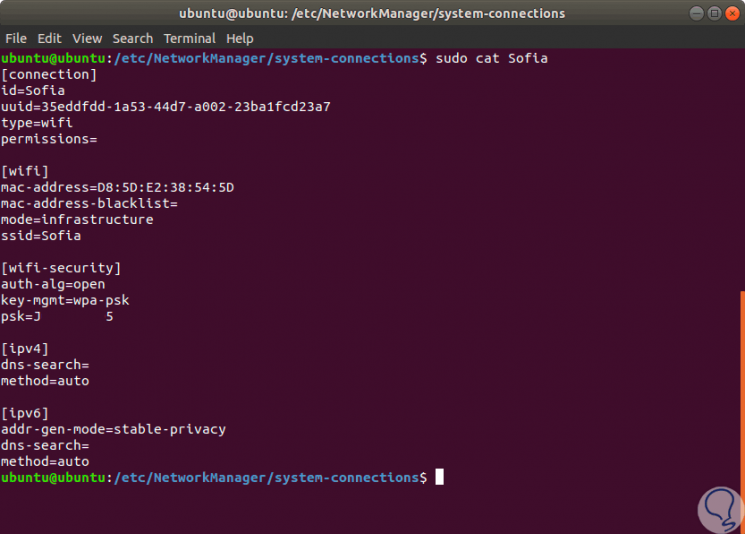

Overall with modern Wi-FI hardware using 'n" protocol you need to ONLY use WPA2 with AES encryption to get the best speeds/throughput. However WPA works with most older hardware where as WPA2 will require more modern hardware (6 year old ish) WPA tends to use TKIP and WPA2 uses AES encryption.īoth these methods Apple call WPA Personal or WPA2 Personal.ĪES is preferred as it is more secure and recent exploits of TKIP have led to it being slowly phased out just like WEP which should not be used at all. Alternatively, use the command below to display all the passwords for the WiFi.
nmcli -s -g 802-11-wireless-security.psk connection showThen, find the specific password for the wireless network of choice.

iwgetid OR nmcli -g NAME connection show. PSK dramatically improves protection over WEP, as the encryption keys change very quickly, thus preventing intruders from gathering data to break encryption and into your network. or find the list of available SSIDs first using the command below. WPA-PSK works by regularly changing the automatic encryption keys authenticated between computers, your server or router and other devices that connect to it. It is then down to the printer to play ball. Then use that to connect the printer to the wifi.
#HOW TO FIND YOUR WIFI PASSWORD WITH A PSK SOFTWARE#
The usual way to fix wifi printers is to find the printer makers utility, the software that runs on your operating system. The PSK mode is designed for home or small network use where an 802.1x authentication server isn't required. Run the Canon Network tool for your unknown Canon printer. WPA-PSK / WPA2-PSK does not require an "authentication server" per se as has suggested. OK lets all take stock and use some logic here and I respectfully disagree with a few of the comments generally being banded about ! And i overall am unhappy about the general forum bashing as well as people may find a hint useful even though "you" have not.


 0 kommentar(er)
0 kommentar(er)
